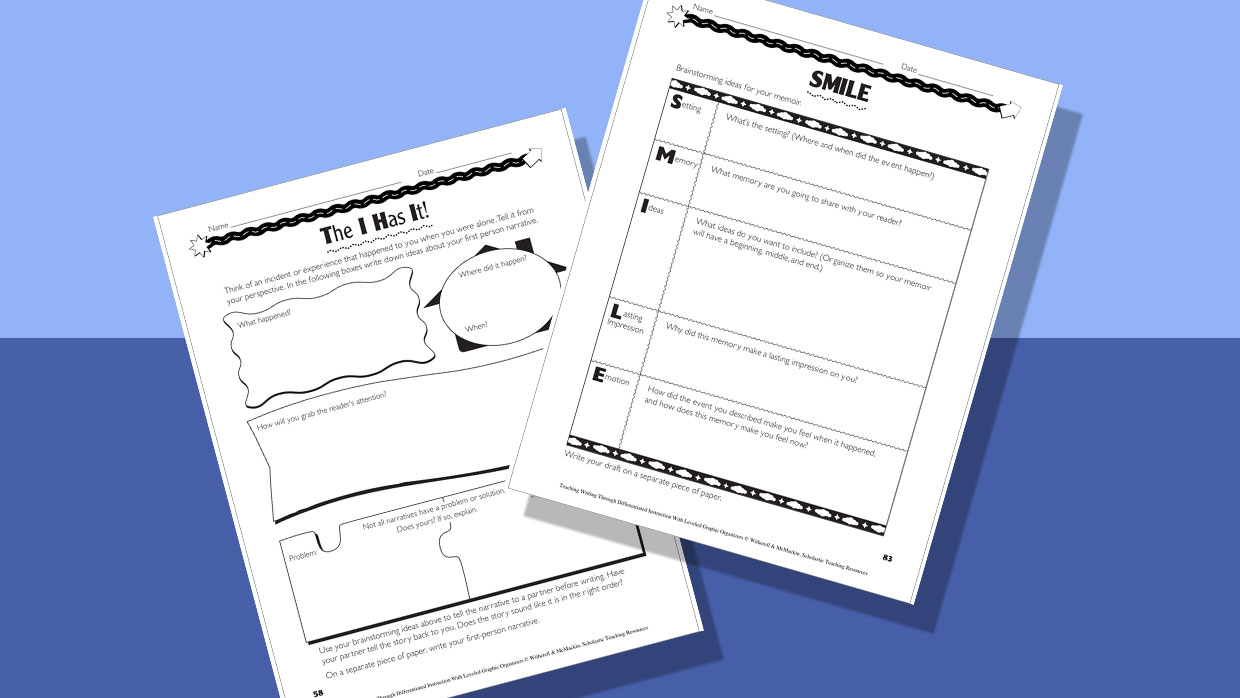Students love to share stories about themselves! As a teacher, you know the rewarding experience of helping students turn that storytelling excitement into engaging, well-written personal narratives. Narrative writing is also an effective way for students to explore important traits of descriptive writing to really make their stories come alive.
When it comes to personal narratives, the ability to clearly organize thoughts and ideas prior to writing is critical. Graphic organizers are the perfect tools to help students reflect on important experiences from their lives and develop their ideas. These organizers ask students to dig deep within themselves to uncover key details and explore the emotions and ideas that will guide their stories from beginning to end.
If your students are ready to write and share stories inspired by their own experiences, these 5 graphic organizers will help them develop personal narratives that will engage and captivate any reader:
1. Personal Narrative Pond: Graphic Organizer & Mini-Lesson
This frog-themed graphic organizer teaches students in grades 2–4 about the writing process and how to take a broad concept and narrow it down to a specific, and more compelling, idea.
2. Writing Graphic Organizer: Nifty Narrative
This graphic organizer encourages writers in grades 3–5 to revisit the feelings and sensory experiences of a special memory and use them to write a detail-rich personal narrative that will engage and captivate readers.
3. Memoir: Leveled Graphic Organizers
Designed for students in grades 4–8, this set of graphic organizers includes lesson tips and model writing samples to help students write about a meaningful personal experience.
4. Point of View (Narrative Writing): Leveled Graphic Organizers
Explore point of view with this lesson and organizers. The memoir-writing organizer From the Inside Out supports students in grades 4–8 with adding details and proper pacing to their narratives.
5. Practice Using Lively Language
Lively vocabulary helps engage readers with vivid imagery and interesting details. After reading model texts, invite students in grades 3–5 to use this graphic organizer to help them create engaging personal narratives filled with powerful language.
To explore more graphic organizers and gain access to thousands of printable and downloadable teacher resources that will help your students write engaging personal narratives, log in or subscribe to Scholastic Teachables today!
